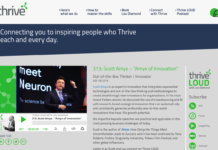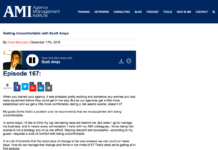Microsoft is one of the biggest and most successful companies that has helped shape the world it is today. And Bill Gates has been central to where Microsoft stands today. Gates is widely regarded as an exemplary leader who effected sustained success for Microsoft over the years. He became the youngest billionaire at just 31 years old. He has been featured in Forbes’ 400 list of wealthiest people in America. Gates’ wealth and fame, however, did not come without its own set of challenges. Like most self-made men, Gates found his way through and around problems that included his family’s expectations, relationships with individuals like Microsoft co-founder, Paul Allen, and birthing pains of starting a new company.
Early Years
William Henry Gates III was born on October 28, 1955 to parents William H. Gates Sr. and Mary Maxwell. He grew up close to his sisters and parents, who encouraged a competitive and achievement-driven environment among their children. At a young age, he was so fond of reading that his parents didn’t allow him to read at the dinner table. Gates appeared uninterested in school. His parents worried about his behavior becoming asocial, so they moved him to Lakeside School. It was in this private institution that he discovered his love for computers. He eventually wrote a tic-tac-toe program in the BASIC programming language.
Gates graduated from Lakeside with a 1590/1600 SAT score. He also met his future business partner Paul Allen in the same school.
After graduating from Lakeside, he enrolled at Harvard University with plans of pursuing a career in law. Yet the university’s computer lab consumed more of his time and became a priority over his classes. He eventually embraced his inclination and shocked his parents by dropping out in 1975 to start Microsoft with co-founder Paul Allen.
Their partnership began when Allen showed Gates an issue of Popular Electronics that discussed the Altair 8800 mini-computer kit. Gates and Allen got in touch with MITS, the company behind Altair and claimed they have a program that could run the computer. Although they didn’t actually have the program, they began working on it for two months when MITS president Ed Roberts requested a demonstration. Without having ever tested the program on the Altair, Allen demonstrated the program at MITS and was hired. Gates dropped out of Harvard to work with his partner.
The Beginnings of Microsoft
Allen and Gates established Microsoft as “Micro-Soft” in 1975. The hyphen was dropped later. The company began with the mission of having a computer in every home, with each device running Microsoft software. But its first few years had several setbacks. For one, the fee Altair paid along with royalties were not enough to cover company overheads. The limit came from only 10 percent of BASIC users paying for the software. Early users and personal computer enthusiasts believed in distributing the software for free. Gates, however, believed free software isn’t the correct way and that commercialization was necessary. Gates wrote a letter to these enthusiasts and other PC hobbyists, stating that unpaid software usage and distribution prevent good software from being written.
As expected, the PC enthusiasts did not agree with him but Gates stood by his philosophy. Gates had the courage of conviction and went against the tide. However, eventually, the whole world would come around and selling software would become one of the biggest businesses in the world.
Further, Gates and MITS president Ed Roberts shared a tense relationship. They both disagreed on how the business should move forward and how to handle software development. Eventually, MITS was sold to another company; so, Gates and Allen ended up suing the new owner to retain rights to Altair’s software.
Developing Software for IBM
Four years after the company’s establishment, it acquired a $.25 million gross value. Gates appointed himself the company’s head at just 23 years old, with his business-oriented vision leading the company to its mission. He made sure each line of code sent out was correct, even rewriting it himself when the need arose.
Throughout the business’ expansion, Gates’ company also faced software competition from Intel, IBM, and Apple. He also became the company’s spokesperson, promoting the software’s advantages over other applications. He had the help of his mother, a highly respected member of some corporate boards that also included IBM. This link gave him a chance to meet IBM’s CEO.
In 1980, IBM approached Microsoft to develop a software for their soon-to-be-released PC. He convinced IBM he had the required software even though he did not have much in place.
To remedy the situation, Gates purchased another operating system capable of running computers like IBM’s. The software developer owning this operating system agreed to make Microsoft the exclusive licensing agent before attaining full ownership. IBM was not aware of this deal at first. So they sued Microsoft for leaving out such crucial information. Both companies settled the matter for an unknown amount with neither party admitting they were at fault. This showed Gates’ never-say-die spirit even when he was up against a giant like IBM.
IBM expressed interest in purchasing the source code from Gates. Gates, instead, suggested that IBM pay Microsoft a licensing fee for all the software sold in their computers. Gates’ innovative thinking ensured Microsoft’s cash registers kept ringing. Microsoft named this software MS-DOS and licensed it to other PC manufacturers to prevent other companies from cloning the IBM PC. Apart from MS-DOS, Microsoft released Softcard, a software to run Microsoft BASIC on Apple II machines.
The Birth of Windows
Although Microsoft and Apple are known rivals, their founders started helping each other develop their respective innovations. Steve Jobs invited Microsoft to develop Macintosh’s software in 1981. The shared knowledge involved Apple’s idea of a mouse controlling the graphic interface, which was much more convenient against MS-DOS’ text- and keyboard-based functions. Gates recognized how Apple’s easy-to-use graphical interface could threaten Microsoft’s eventual developments.
The mouse-controlled interface led to Windows, an operating system that employed a graphic interface. Microsoft announced the future launch of Windows, a software that would be compatible with all PC software products developed through MS-DOS. Similar to the software for IBM machines, Windows did not actually have the program but the announcement caught the attention of the 30 percent PC market controlled by Microsoft. It made more sense to wait for Windows than replace MS-DOS with an entirely new system. Windows’ look had many similarities to Apple Computer’s Macintosh system. Two years before Microsoft’s launch, Gates told Apple to license the software but the company focused on computer sales. Apple told Gates they’d sue but he threatened with potentially delaying the software they developed for Macintosh users. Microsoft won in the courts since the two software did not share the same individual functions, despite their similar operations.
Windows and Beyond
Eventually, Gates’ relentless and competitive approach also led to Microsoft going head to head with IBM. Other companies too attempted to develop their own operating system to replace MS-DOS. But Gates focused on developing Windows’ operation and adding more functions to it. Microsoft introduced their Office software in 1989, where they bundled in all the necessary applications in one system. Microsoft’s latest Windows version sold 100,000 copies in just two weeks. Windows 95 sold 7 million copies within first six months of its launch. The later years firmly established Microsoft’s monopoly in operating systems for PCs.
Gates wasn’t content with the success of Windows. In the mid and late 90s, he sensed that the future of computing is going to be around the Internet. And Microsoft introduced Internet Explorer, which would rule the roost for several years to come. Not only that, Microsoft also started focusing on developing other products centered around the web and Internet, and later, Cloud. Gates ensured that Microsoft has in its DNA not only the adaptability to change but to become the harbinger of change.
Other Legal Challenges
The FTC and Justice Department began investing Microsoft in the 90s for its marketing practices. They charged Microsoft for requiring computer manufacturers to also sell the Internet Explorer along with the devices that included the Windows operating system. The company also faced tensions between the software development and operating systems divisions. But Microsoft settled the matter with the FTC, while also defending its belief that piracy is a threat to innovation.
Despite all the legal challenges, Gates bravely ran the company all the way through. After running Microsoft for nearly three decades and turning into an IT giant, Gates turned over the CEO title to Steve Ballmer in 2000. He juggled dual roles working as the company’s chief software architect while also working for the Bill & Melinda Gates Foundation. He eventually left Microsoft to work full-time for the foundation in 2008. The foundation focuses on a wide range of international and domestic issues that cover health and education.
Bill Gates: Turning Big Risks Into Advanced Feats
Gates faced several struggles but overcame each one with a forward-looking and positive mindset. His risk-taking ability also pushed forward his vision, eventually culminating in immensely useful and popular OS like Microsoft Windows. It also paved the way for a number of other revolutionary products from Microsoft. Gates proves that turning big risks into opportunities leads to bigger achievements.


















